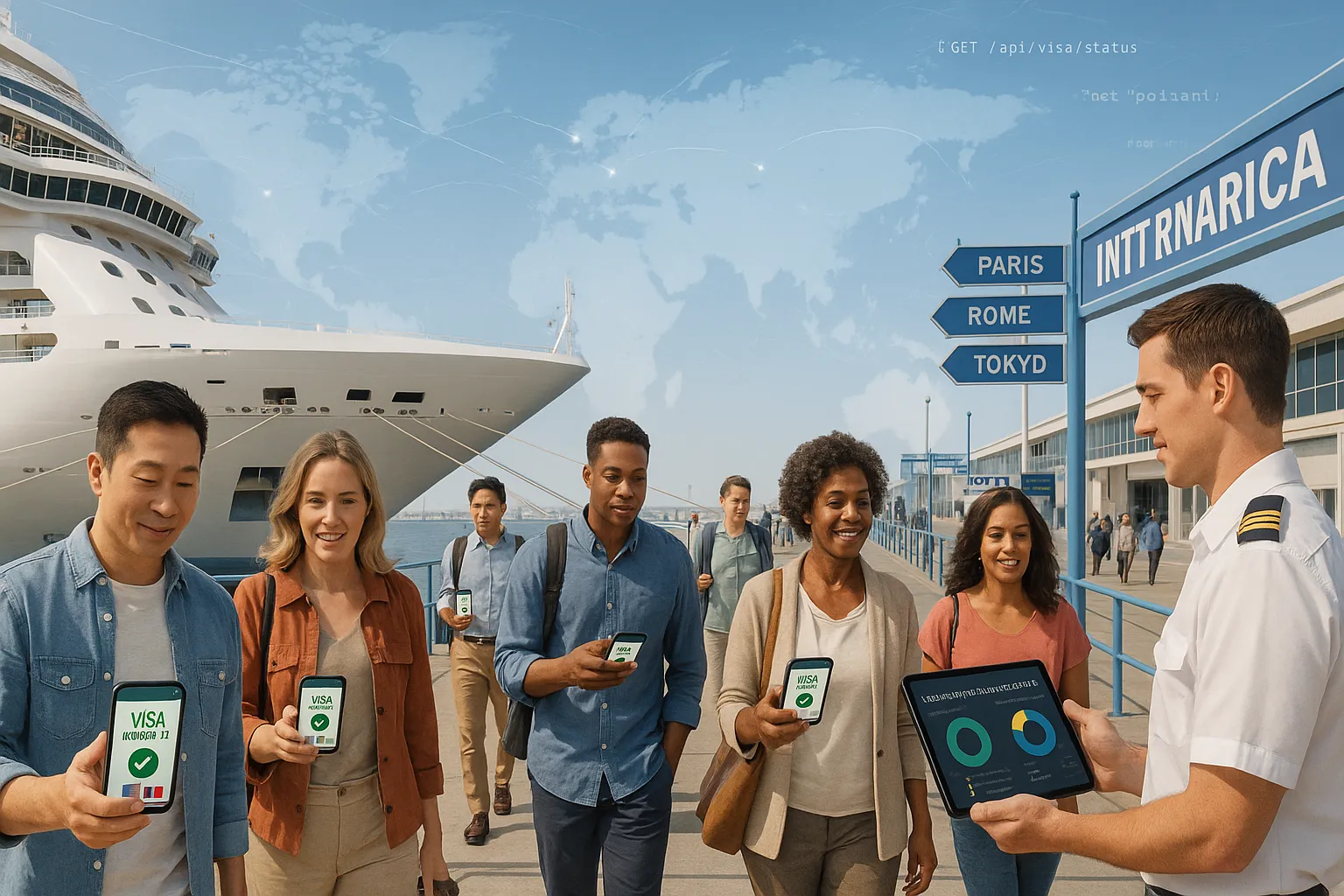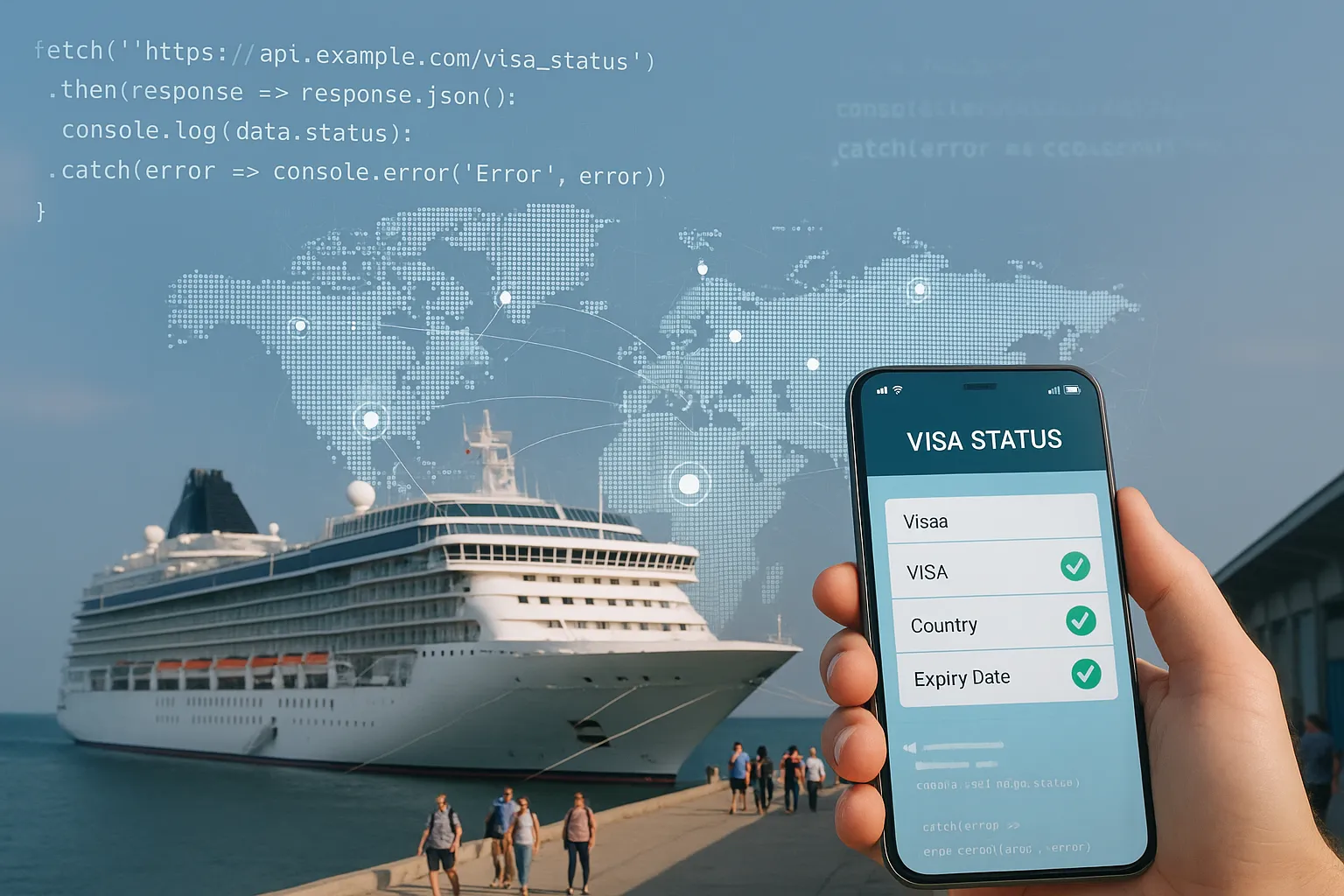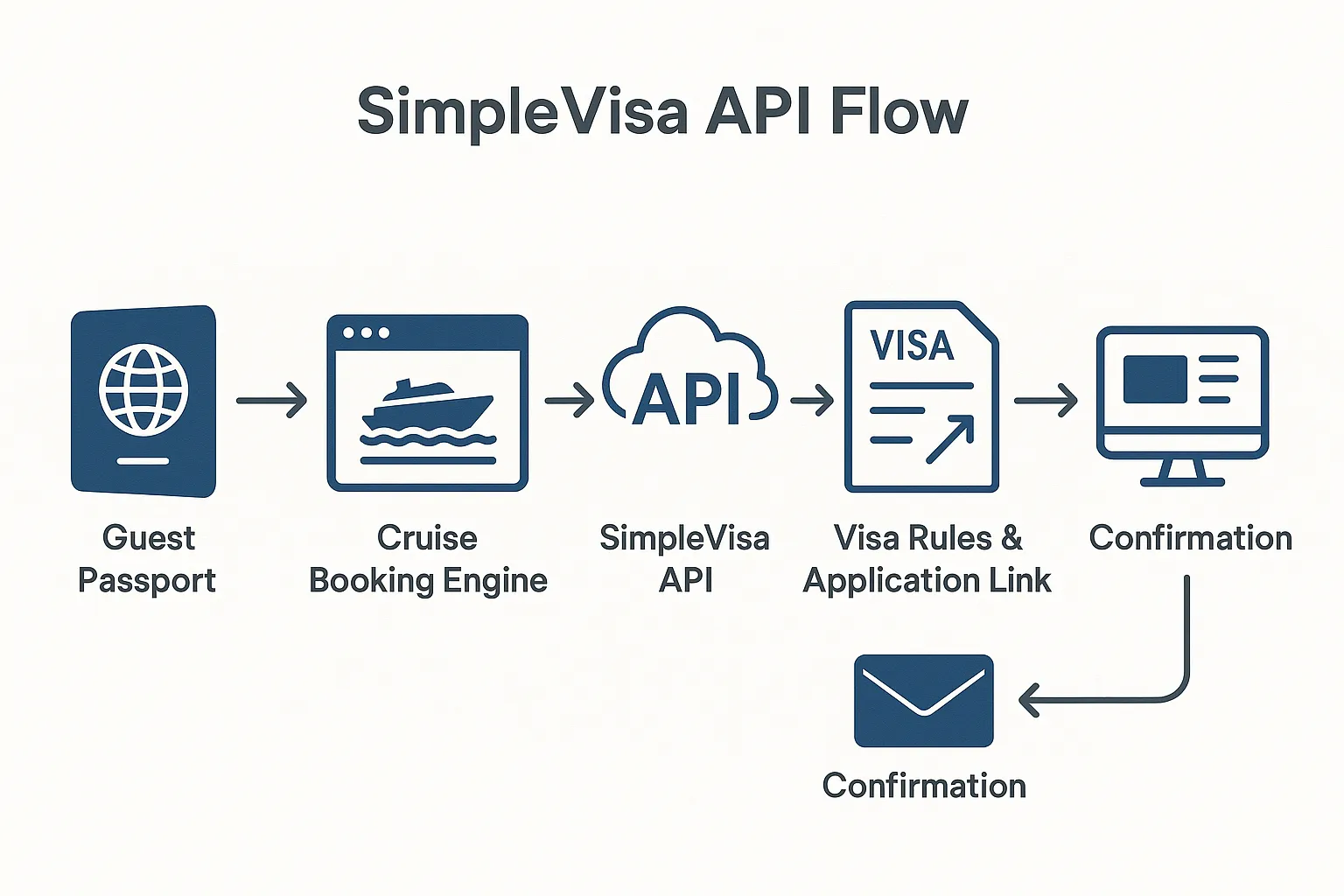How Cruise Lines Can Simplify Shore-Visa Requirements with API Data

Visa Stress at Sea: Why Cruise Lines Need a New Playbook
Cruising is built on effortless indulgence—one cabin, multiple countries, no airport hassles. Yet the moment a ship docks, a familiar anxiety surfaces for both passengers and crew: Do I need a visa to step ashore?
Paper lists at the gangway, last-minute announcements, and frantic line-ups at the purser’s desk are still common, even on ultra-modern vessels. The root problem isn’t guest negligence; it’s fragmented, fast-changing border policy. A single 14-night itinerary might touch eight jurisdictions, each with its own electronic visa (eVisa), transit waiver, or immigration form—sometimes changing mid-season.
Modern cruise brands already use sophisticated APIs to price cabins, book tours, and check weather. Extending that same data-driven mindset to visa compliance is the logical next leap. Below we explore how real-time visa APIs can turn shore-day chaos into a frictionless experience that delights guests, lightens crew workload, and unlocks new ancillary revenue.
1. The Shore-Visa Challenge in Numbers
- 9.4 million: distinct port calls scheduled worldwide in 2024, each subject to local entry rules (CLIA data).
- 26%: percentage of cruise itineraries touching two or more visa regimes in a single week.
- 42 minutes: average guest service time lost per passenger when visa documents are incomplete, according to a SimpleVisa client study.
The operational knock-on effects—delayed gangway clearance, shipboard queuing, guest dissatisfaction—can erode Net Promoter Scores and drive avoidable compensation payouts.
2. Why Spreadsheets and PDFs No Longer Cut It
- Regulation velocity: Countries such as Brazil, Qatar, and Indonesia reinstated eVisa rules with only weeks’ notice in 2023. Manual document libraries age in hours, not months.
- Complex guest profiles: A 3,000-passenger sailing easily represents 100+ nationalities. A static PDF can’t personalize requirements for each passport.
- Mobile-first expectations: Guests who can open cabin doors with a wristband don’t understand why visas still involve forms and queueing.
The result? A “silent cost” paid in extra staff, missed excursions, and reputational friction.
3. Enter the Visa Data API
A visa data API is a REST or GraphQL service that delivers up-to-the-minute entry requirements based on three core inputs:
- Passport nationality
- Port country + arrival date/time
- Length or purpose of stay (e.g., shore excursion under 24 h)
The API responds with machine-readable instructions—visa needed? waiver? no action?—plus links to an application form or embeddable eVisa widget.
How it differs from a database: The API is dynamically updated from government bulletins, embassy feeds, and crowdsourced port agent data. Cruise lines no longer “pull updates,” they consume them in real time.
For a technical deep dive, see our guide How eVisa APIs work: Step by Step.
4. Seamless Guest Journey—From Booking to Gangway
| Phase | Traditional | API-Driven |
|---|---|---|
| Online booking | Fine print reminds guests to “check requirements.” | Booking engine pings visa API, displays personalised alerts, and adds the relevant eVisa product to cart. |
| 60 days prior | Mass email blast with PDF country list. | Automated “visa ready” status pushed to guest app; reminders sent only to those still non-compliant. |
| Embarkation | Staff manually verify printed visas. | Check-in desk scans passport; API validates against digital visa record in seconds. |
| Shore day | Announcements to bring passports; agents review paper. | Guests scan boarding card; system confirms visa on file before gangway opens. |
The change is invisible to guests—yet the sense of effortless care is tangible.
5. Revenue Upside: Visas as an Ancillary Product
Cruise operators earn healthy margins on drink packages and Wi-Fi passes; visas can join that list. By embedding SimpleVisa’s white-label checkout into your booking flow, guests can purchase eVisas in the same basket as shore excursions.
Benefits:
- Commissionable fee on every approved visa.
- Bundled convenience (e.g., “India eVisa + Taj Mahal Excursion Combo”).
- Higher conversion: guests are 58 % more likely to book excursions when visa assurance is solved, per internal SimpleVisa analytics.
For a macro view of visa-powered revenue, read 3 Benefits of a Travel Visa Document System.
6. Crew & Operations: Lighter Load, Stronger Compliance
- Automated manifests: API returns a real-time compliance dashboard for shore-side authorities, reducing manifest rework.
- Denied boarding risk: Proactive checks catch missing visas before guests fly to the embarkation port, not at the pier.
- Training savings: Crew no longer memorize dozens of visa rules— they consult an on-device widget updated by the API.
A leading premium line cut pre-cruise call-center time by 35 % after deploying SimpleVisa data across its CRM and guest portal.
7. Implementation Blueprint for Cruise IT Teams
- Identify touchpoints: website booking path, mobile app, embarkation kiosks, crew tablets.
- Request API credentials from SimpleVisa (sandbox keys issued within 24 hours).
- Map data fields: nationality, passport expiry, sailing ID. APIs accept ISO country codes and port GEOIDs.
- Frontend integration: embed visa widget via JS snippet; optional white-label app for guests without your mobile app.
- Certification & test calls: Mock itineraries provided to simulate edge cases (e.g., dual citizenship, Schengen multi-port loop).
- Launch & monitor: Real-time analytics console tracks compliance rate and revenue per passenger.
No in-house dev? Use our no-code option that surfaces visa status in an email workflow or PDF manifest—ideal for smaller expedition lines.

8. Data Security and Privacy
Passenger passport data is sensitive. SimpleVisa’s platform is:
- ISO 27001 certified
- GDPR compliant, with EU data residency options
- End-to-end encrypted (TLS 1.3, field-level AES-256 at rest)
Only minimal data—passport number hash, nationality, DOB—is stored, and it’s purged on a rolling 60-day schedule unless mandated otherwise by flag-state regulations. More on safeguards in How Secure Is the Electronic Visa System?.
9. Future-Proofing for ETIAS, ETA & Beyond
Europe’s ETIAS and similar schemes in the UK, South Korea, and the Caribbean will reshape cruise immigration. APIs insulate cruise lines from the “next big rule” because rule logic lives server-side—no code changes required when a new country flips the eVisa switch.

10. Getting Started
- Schedule a 30-minute discovery call to map your upcoming itineraries against current visa pain points.
- Run a pilot on one ship or region (e.g., Asia repositioning voyages) to benchmark queue times and service calls.
- Roll out fleet-wide before high season; offer a launch promotion (free visa concierge for loyalty tier guests) to spur adoption.
Digital visa delivery used to be an aviation perk. With modern APIs, cruise passengers can enjoy the same peace of mind—spending less time worried about paperwork and more time savoring sunsets off the bow.
Ready to turn visa hassle into a competitive advantage? Request a SimpleVisa API demo and sail into your next season visa-ready.